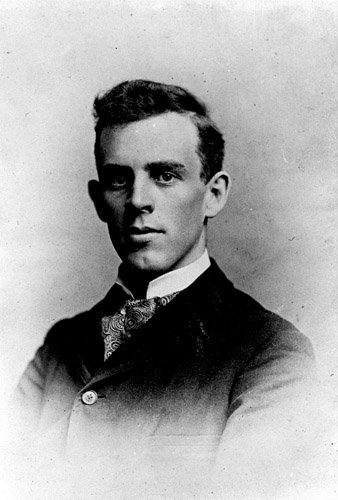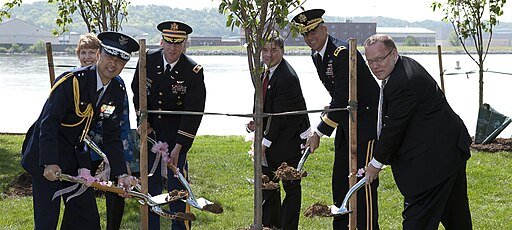The Cherry Blossom
The history of the Cherry Blossom, why it’s connected to the most invasive vine of the south, and how it represents the samurai.
Prunus serrulata ‘Kanzan’, April 26th
In 1902, David Fairchild, an American botanist, planted seedlings of a lesser known vining deciduous perennial around his Washington D.C. home. He wasn’t the first to bring it to the US; that honor goes to an ornamental display at the the Philadelphia Centennial Exposition of 1876, but it captured only nominal interest there. Fairchild, enchanted with its use in pasturing by the Japanese, wanted to explore its potential locally.
To his ever sprawling dismay, he watched as it “grew all over the bushes and climbed the pines, smothering them with a mass of vegetation which bent them to the ground and became a tangled nuisance.” As the scourge took hold of his beloved gardens, he noted despondently “I spent two hundred dollars in the years which followed trying to get rid of it, but when we sold the place there was still some kudzu behind the house....”
Kudzu famously became the scourge of the south and you would be forgiven for thinking such a transgression would have cast Fairchild’s reputation into ruin. However, while the vine crept into the minds and landscapes of America, it was David who petitioned against it. The Soil Conservation Service, meanwhile, aggressively promoted it; farmers were paid $8.00 per acre to plant the vine. More than 1.2 million acres were planted during this subsidized program.
Despite the Kudzu misstep, David Fairchild would become the most renowned plant explorer of his time. He and his staff brought more than 100,000 species to the US, including some of the most valuable crops exported today: soybeans, mangos, avocados, dates, alfalfa, nectarines, pistachios, horseradish, bamboo, the Meyer’s lemon and kiwifruit. The introduction of durum wheat from Siberia transformed the economy of the Dakotas, and soybeans are now the second most valuable crop in America after corn, with a total worth of $46.1 billion in 2020.
When he wasn’t traveling, Fairchild and his wife Morgan were decorating the grounds of their Washington estate, dubbed “Into the Woods,” with all manner of delightful flora. Above all others, he admired the Japanese Yoshito Cherry species and in 1906 he imported seventy-five flowering and twenty-five weeping varieties from the Yokohama Nursery Company in Japan. These he planted on a hillside of his own property in Chevy Chase, Maryland (where at least one, now 117 years old, still grows). The cherry trees took off and the successful adaptation to the Washington clime prompted the Fairchilds to begin advancing the species as ideal for the District’s public spaces. They convinced their friends to plant trees by the hundreds along avenues and city streets. They handed out saplings to children in neighboring schools, in hopes they would be incorporated on school grounds. They lobbied in public addresses for the transformation of the Tidal Basin (near where the Jefferson, MLK, FDR, and George Mason memorial currently stand) into a ‘Field of Cherries.’ This caught the President’s attention and after a great deal of emphatic petitioning he (somewhat reluctantly) acquiesced. On March 27, 1910 Helen Herron Taft and the Viscountess Chinda, wife of the Japanese Ambassador, planted two Yoshino cherry trees on the northern bank, about 125 feet south of what is now Independence Avenue, SW. The trees were a colossal public success, inciting future reenactments, annual pageants, and multi-day commemorations. Eventually, 3,000 more would be planted. In 1938, well-meaning officials proposed to clear out some of the trees in order to make way for a memorial to Thomas Jefferson. Citizens, clubs, boards, and associations of Washington erupted, provoking the ‘Cherry Tree Rebellion’, frontrunner for the most aggressively peaceful entitled coup in US History. Activists chained themselves to trees and protestors marched to the White House.
Public fervor has scarcely waned over 113 years. The imposing grandeur of three thousand cherries blooming every April is considered Washington's grandest springtime tradition, attracting a million visitors annually. Known as hanami in the east (from hana meaning “flower” and mi “to look”), the cherry blossom has been commemorated in Japan since the Vikings waged war against the Germans and Polynesians first colonized Hawaii (~800 AD). In the more populated centers such as Ueno Park and Yoyogi Park in Tokyo the competition for prime picnic spots is intense. For many, the flowering represents the brevity of life and the frailty of existence, and this is celebrated by getting roaring drunk on copious amounts of saké. For others, each bloom illustrates the life of a samurai, a brief explosion of color, bright for the duration of their short life, before they precipitously wither and die. Inversely, the legacy of David Fairchild, with his ever-spreading Kudzu and indelibly esteemed cherry blossoms, remains enduring and steadfast. The two original trees, planted 113 years ago by Helen Taft and Viscountess Chinda still stand several hundred yards west of the John Paul Jones Memorial.
The Japanese Cherry, or sakura, is from the genus Prunus, same as the previously discussed flowering almond and the blooms appear strikingly similar. You may recall this is the same genus that brings us the nectarines, apricots, and peaches. The fruits of all Prunus are drupes, containing a fleshy edible coat (mesocarp) surrounding an inedible rock hard pit (endocarp). Japanese Cherries are grown for their flowers, not their fruits, which tend to be small and unpalatable. Because of the long tradition, bloom times have been scrupulously recorded for over a thousand years. The average peak day in the 1850’s, just as the Industrial Revolution was coming to a close, was April 17. Today it is April 5th. The blossoms have an intoxicating smell, and have been the inspiration for many candles, incense, and even Baskin Robbins ice cream.
HAND-CHURNED CHERRY BLOSSOM ICE CREAM
FROM THE FAIRMONT
INGREDIENTS
Yield: 1 L
1 cup cherry blossoms
1 tsp salt
750ml milk
750ml whipping cream
360g egg yolks (approximately 12)
300g sugar
6 Fairmont Kyoto cherry tea bags
PREPARATION
Difficulty: Easy Total Time: 3 Days
Mix blossoms with salt, weigh down between 2 bowls and allow to sit in fridge for 3 days, this will leach out the natural bitterness from the flowers
Strain liquid and blot with paper towels
Heat milk, cream, cherry blossoms and tea bags to a boil
Temper egg yolk and sugar mixture by whisking in some hot liquid
Return mix to pot and cook over medium heat, continuously stirring with a wooden spoon
Immediately strain through a fine meshed strainer into a container
Place container of ice cream base into an ice bath and cool to body temperature
Rest in the refrigerator overnight or at least 4 hours
Churn in ice cream machine, following manufacturer’s directions
Freeze until ready to enjoy
Knowledge Sources
https://www.farmersalmanac.com/cherry-blossom-trees-112959
https://www.nps.gov/articles/the-cherry-tree-rebellion.htm
https://www.nps.gov/articles/hanami.htm
http://www.fairmontmoments.com/food-drink/recipes/desserts/hand-churned-cherry-blossom-ice-cream
https://www.americanheritage.com/how-cherry-blossoms-came-washington
A tra
http://www.miamiherald.com/living/home-garden/article45235743.html
https://mississippiencyclopedia.org/entries/kudzu-plant/
https://www.invasive.org/biocontrol/25Kudzu.html
https://en.wikipedia.org/wiki/David_Fairchild
https://www.nps.gov/featurecontent/cherryblossom/history-of-the-cherry-trees.html
https://www.thedailymeal.com/sakura-cherry-blossom-ice-cream-baskin-robbins-japan/22316/
Image Sources
https://commons.wikimedia.org/wiki/File:Cherry_Blossom_Trees_in_Washington,_DC_(db602a2a-74aa-4476-a684-6c905eea92c4).jpg
https://commons.wikimedia.org/wiki/File:Historic_Ceremonial_Cherry_Tree_Planting.jpg
https://en.wikipedia.org/wiki/David_Fairchild
https://commons.wikimedia.org/wiki/File:Kudzu_on_trees_in_Atlanta,_Georgia.jpg
https://weedid.missouri.edu/weedinfo.cfm?weed_id=236






